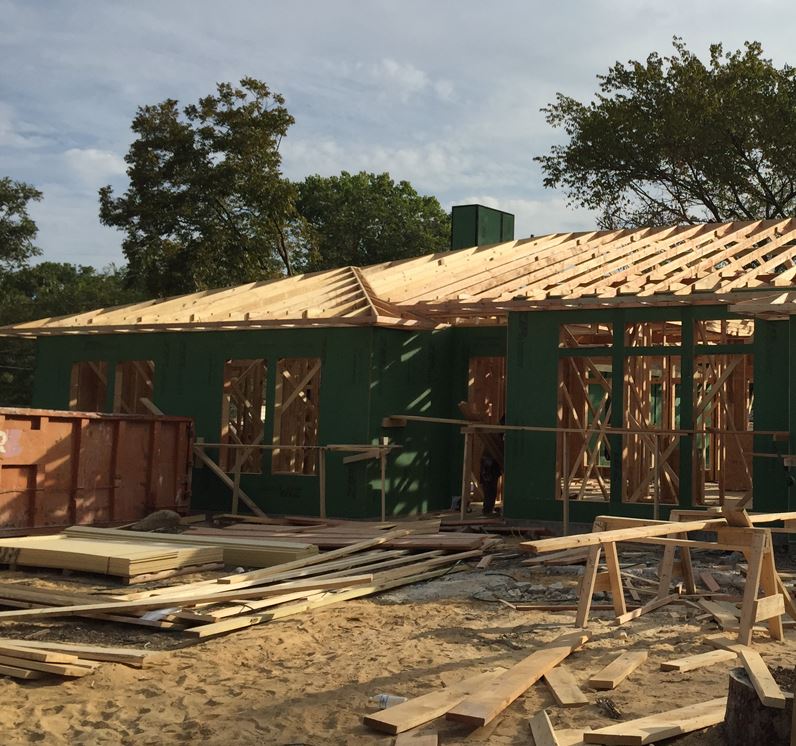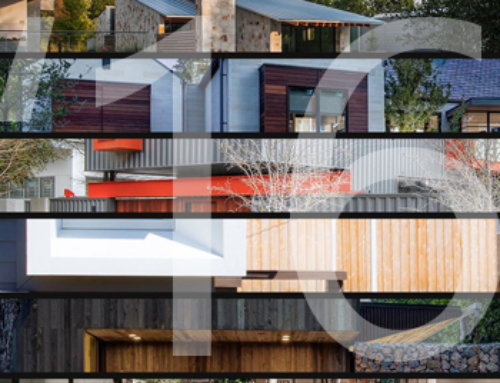Why CA? What’s CA? Huh?
CA, or Construction Administration in the lingo of architecture, is loosely defined as an architect’s services to a client from the time the client awards the construction contract to a builder to the date on which the architect executes the final payment certification to the owner. Really the correct terminology for “CA” is Construction Contract Administration [Services] for the client. Huh? Basically, I use this definition: CA is the time I spend on the last project phase observing construction progress and working with the builder on the owner’s behalf answering questions the builder may have yadda yadda yadda….
So why do I use the term observe and not inspect? After all, you can watch me walking around a job site looking at everything and taking notes and photos as I go. It’s a contractual thing and most if not all Architects have similar clauses in contracts with their clients; the Architect’s role during construction is to interpret the Construction Documents (CDs), review submittals, and conduct site visits. During site visits I determine, in general, if the Work I observe is being performed in a manner that indicates the job will be finished in accordance with the design intent of the CDs. There’s that word observe again. Think of it this way – I don’t count nails per sheathing panel or inspect a formwork layout for proper bracing – these are the builder’s responsibility. But if I observe a sheathing panel barely hanging onto the side of a house I’d suspect there may not be enough nails to meet code and I would point this out to the builder and communicate the same to my client.
So what then is so important about the CA phase that a client couldn’t just do it for themselves and cut out the Architect and a portion of his or her fee? I have seen this happen and the end results may or may not reflect what the client paid for during design. Yes it’s cheaper for the client, but what are they to do if the builder asks “can I install 3-tab composition shingles on that roof instead of the expensive membrane your Architect specified?” Some clients may say “sure it saves me money, right?” but I’m likely to be more knowledgeable about roofing installations than the average person and be able to explain to the builder and client the reasons why 3-tab shingles are not an appropriate product to fill this request, and that they need to stick with the specified product. I’m the client’s advocate from day 1 until day done.
Fun stuff, huh?
OK so if you’ve stuck with me this far, here is a real-world example from a recent site visit I went on. I’ve marked up each photo with something that caught my attention. Before reading my observation after each photo, think about what you might come up with for each image and see if your observation parallels mine.
This is one of the trenches that run across the foundation – a concrete rib will fill in the trench and span from pier to pier in the fight against north Texas’ expansive clay soils. The black poly sheeting (plastic) is the vapor barrier which prevents moisture in the soil from migrating upward into the concrete slab and perhaps wreaking all kinds of future havoc on the house. It also provides some protection against subterranean termites getting into the house from cracks or holes in the concrete. Ever heard of Radon gas? So why then do you see dirt below the trench? I’d prefer to see the membrane continuous under the entire slab so it provides a continuous barrier to the things it is there to block.
Second photo of a location where the trenches for two ribs cross. I see more bare dirt like above. I also see plenty of holes in the membrane. Those kind of defeat the purpose of having the membrane, right? So what is the arrow pointing out? If you guessed “hey the ribs cross at the piers and I don’t see a pier cap” you’re right. The builder needs to sweep some dirt off the tops of the pier caps so the concrete slab bears directly on the pier. If there is dirt in the way, the dirt (clay) can still expand or contract as its moisture content changes and that’s not going to help.
This one is harder to discern to the untrained eye. If I wrote the word “level” above the line connecting the arrows you would probably understand that the top of the form board is almost level with the ground under the neighbor’s fence. The foundation should ideally at least a few inches above adjacent ground level. So here’s the conundrum – do I tell the builder about this and say he has to raise everything he’s already done (and they are about 75% done with rebar installation and two days from the concrete pour) or do we get strategic about down-the-line ramifications?
The latter is really the only thing I could have done at this point, and the builder will need to carefully grade the soil down this side yard to move rainwater past the front of the house. He may have to buy and install French drains and piping to help with this little situation. Ultimately the builder is convinced the side yard won’t have any problems with water drainage and it is up to him to implement the necessary strategies. If my day of observation had coincided with the day the crew was preparing to start the groundwork I possibly would have discussed this elevation situation with the builder and he could have laid out the entire foundation a few inches higher. I should explain that on this job the builder is my client, and he is responsible for his field decisions.
This was one situation (or two, really) that I stood there and looked at for a while, and it’s 94 degrees at noon with about 80% humidity at the time of my site visit. This project is a custom build for sale by the client-builder. The builder can call me out for site visits but hasn’t done so to date, so when I showed up for my own observation I’m standing there looking at this for a while. What gives? I cannot figure out what these two “nubs” on the front of the house are for. The second image shows a dashed line where I expected the form boards to jog but the protrusion filled up with rebar stymied me for a while.
I went back to the office and looked at my CDs and the builder did the same (too hot outside and we were out of time as he had to leave the site). We hopped on the phone an hour or two later, and the builder figured out his engineer had designed the front of the foundation based on a previous part of the design that was changed prior to permitting and I wasn’t contracted to review work of the builder’s engineer. The formwork and rebar crews followed the engineer’s drawings and here we are. After discussion with the engineer, the builder came back to me and said one of the two nubs will be abandoned and removed but the other at the corner is needed because it sits on a pier below. Dang. And you can’t just not use the pier at the corner of the slab. Luckily we worked with the engineer to redesign a bit of rebar, and the height of the nub will be cut down so the final concrete will not protrude above ground level.
Great!
So how’d you score versus me? If you nailed all 5, you’re probably experienced in construction and lucky that you can keep up with CA. Otherwise, keep the Architect on hand during the CA phase to be your guide, advocate, and second set of eyes – you never know what I’ll observe that keeps you out of trouble and keeps the project moving in the right direction.
____________________________
This post was originally written before re-branding as Eckxstudio for Modern Architecture at the end of 2017.
At Eckxstudio for Modern Architecture, we design unique and stunning projects, individually crafted for our clients’ lives. We’re passionate about listening to your needs, wants and desires as inspiration to design the dream home you’ll never want to leave.










Enjoyed your explaination of terms.